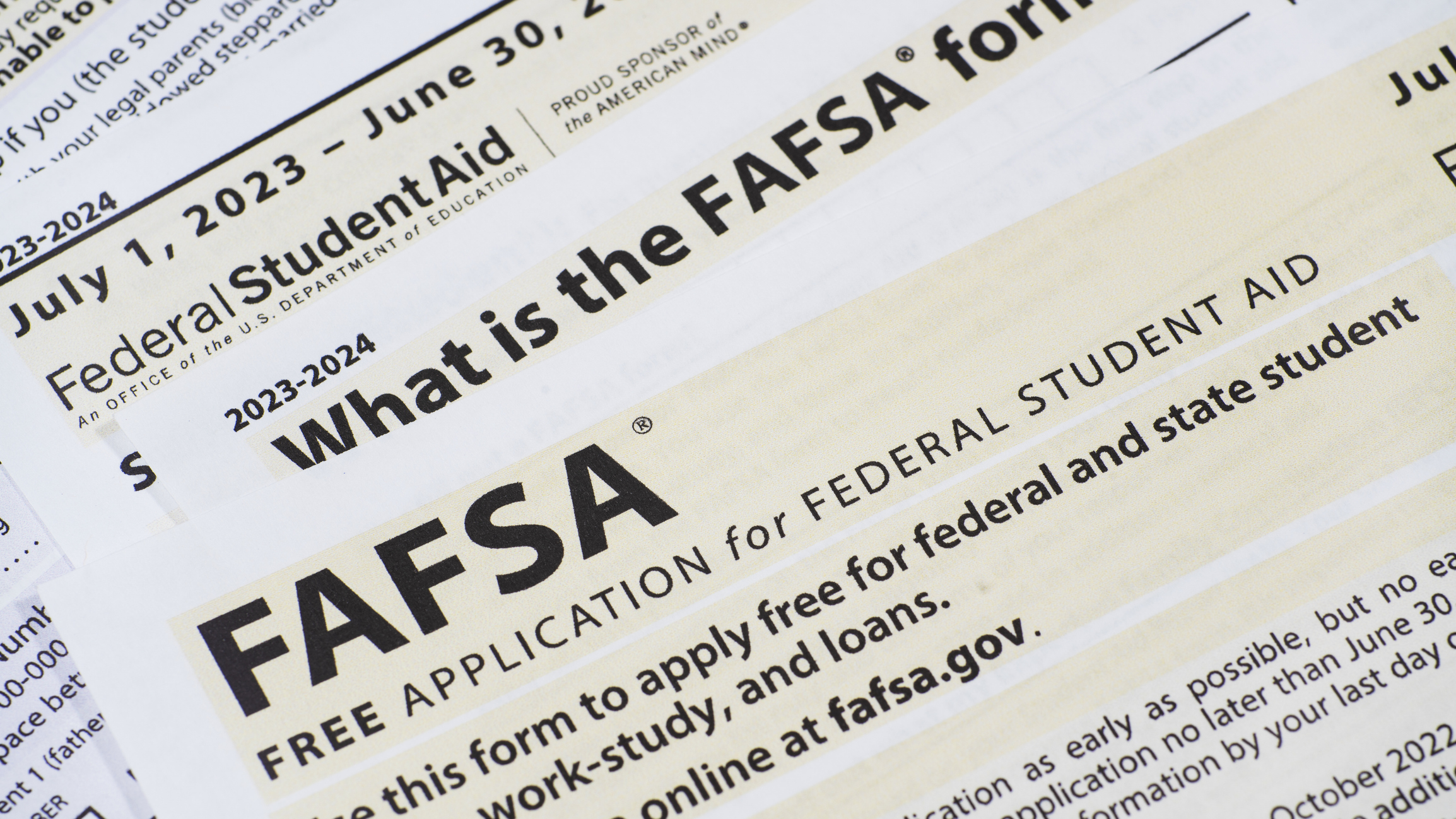The New FAFSA: What You Need to Know for 2026-2027
Updated September 2025
The Free Application for Federal Student Aid (FAFSA) is the key to unlocking financial aid opportunities for college, from federal grants and loans to state and institutional scholarships. With the passage of the FAFSA Simplification Act, families have seen significant changes to the process in recent years. For the 2026-2027 academic year, additional updates will make applying smoother while also refining eligibility rules. Here’s what you need to know.

FAFSA Opening Date
For the 2026-2027 school year, the FAFSA will open on October 1, 2025, returning to its traditional timeline after the delays of recent years. Because many states and colleges award financial aid on a first-come, first-served basis, it’s best to file the FAFSA as soon as possible after it opens. Submitting early ensures you don’t miss out on state and institutional aid deadlines, which may fall well before the federal deadline of June 30, 2027.
What is the FAFSA?
For those unfamiliar with the process, the FAFSA is a form used by the U.S. Department of Education to determine eligibility for federal student aid, including Pell Grants, federal student loans, and work-study programs. In addition to federal aid, many states, colleges, and universities use FAFSA information to distribute their own financial assistance.
Completing the FAFSA is free, but the process can be overwhelming due to the financial information required and the detailed questions asked about your family’s income, assets, and other factors. For years, students and parents have expressed concerns about the complexity of the form, which is why the Department of Education has been working to make significant improvements.
Previous Changes to the FAFSA
In 2024, the FAFSA underwent its most significant overhaul in decades. These updates were designed to simplify the form and the overall financial aid process. Below are the most noteworthy changes:
-
FAFSA Simplification Act
The FAFSA Simplification Act is at the heart of these changes. Signed into law in December 2020 as part of the Consolidated Appropriations Act, the FAFSA Simplification Act aimed to reduce the number of questions on the form and make it easier for students and their families to apply for financial aid. Here’s a breakdown of how this law has affected the FAFSA:
- Fewer Questions: Previously, the FAFSA contained more than 100 questions, which many applicants found daunting. The new FAFSA includes fewer questions, reducing the complexity and making it less time-consuming.
- Replacing the Expected Family Contribution (EFC) with the Student Aid Index (SAI): The Expected Family Contribution (EFC) has been a source of confusion for many families. It was often misinterpreted as the amount families were expected to pay for college. The Student Aid Index (SAI) will provide a clearer picture of financial need and eligibility for aid, making the process more transparent.
- Expanded Pell Grant Eligibility: The updated FAFSA aimed to make more students eligible for Pell Grants, a form of federal aid that does not need to be repaid. Pell Grant eligibility now considers more factors, including family size and the poverty level in a student’s area, potentially increasing the number of recipients.
-
Easier Access to IRS Data Retrieval Tool (DRT)
One of the most time-consuming aspects of completing the FAFSA has been manually entering tax and financial information. To streamline this, the updated FAFSA made it easier for applicants to use the IRS Data Retrieval Tool (DRT). The DRT allows students and families to import their tax information directly from the IRS, reducing errors and simplifying the application process.
-
Better Support for Non-Traditional Families
The FAFSA traditionally used language and categories that didn’t always reflect the realities of non-traditional family structures. The new FAFSA includes updates that better address the needs of single-parent families, blended families, students raised by legal guardians, and foster youth.
-
Expanded Access for Previously Underserved Populations
While undocumented students remain ineligible for federal financial aid, the updated FAFSA offers clearer guidance on state and institutional aid that may be available to them. Some states and colleges use the FAFSA to determine eligibility for their aid programs, and the new, simplified form makes it easier for undocumented students to navigate this process.
Key Changes to the 2026-2027 FAFSA
Several important updates will shape how families complete the FAFSA this year:
- Simplified Contributor Invitations
Students will now invite parents or spouses to complete their section of the FAFSA using just an email address. Contributors receive a secure code, making it easier and less error-prone than entering Social Security numbers and birth dates. - Real-Time Identity Verification
Applicants and contributors with a valid Social Security number can now have their FSA ID verified instantly, reducing wait times and making the process smoother. - Small Business and Family Farm Exclusions
Families will no longer need to report the net worth of:
— Family-owned businesses with 100 or fewer full-time employees
— Family farms on which they live
— Family-controlled commercial fishing businesses
This change reduces the financial aid penalty for families who are asset-rich but cash-flow-limited. - Pell Grant Eligibility Updates
The FAFSA will now count foreign earned income (previously excluded) when determining Pell Grant eligibility.
Students whose Student Aid Index (SAI) equals or exceeds twice the maximum Pell Grant award ($14,790 for 2026-2027) will not qualify for Pell, unless they meet certain “Special Rule” exceptions (such as being the child of a deceased military service member or public safety officer). - Beta Testing Access
Some applicants may gain early access to the FAFSA during a beta testing period before October 1. Submissions made during beta testing are valid and do not need to be repeated.
Together, these changes aim to make the FAFSA more accurate, streamlined, and equitable, while clarifying eligibility for Pell Grants and other forms of aid.

How to Prepare for the 2026-2027 FAFSA
Even with simplification, preparation makes the FAFSA process smoother:
- Create your FSA ID early: The Federal Student Aid (FSA) ID is your unique identifier for completing the FAFSA. Both students and contributors need one, and now it can be verified instantly online.
- Gather necessary documents: Tax returns, W-2s, bank statements, and records of investments and untaxed income will still be required.
- Watch deadlines: While the federal deadline is June 30, 2027, many states and colleges have earlier dates. Filing early maximizes aid opportunities.
- Don’t assume you won’t qualify: Even families who don’t expect federal grants may be eligible for institutional or state aid that requires the FAFSA.

The Impact of FAFSA Changes on Financial Aid
The updates to the FAFSA are expected to have a significant positive impact on students and families across the U.S. By simplifying the form, expanding access to Pell Grants, and providing better support for non-traditional families, the Department of Education is working to make higher education more affordable and accessible for everyone.
These changes come at a critical time as the cost of college continues to rise, and many students and families struggle to pay for higher education. With the FAFSA Simplification Act in place, more students will be able to qualify for financial aid and receive the support they need to pursue their academic goals.
Final Thoughts on the FAFSA
The 2026-2027 FAFSA brings a return to the regular October opening and introduces new rules designed to make the process simpler and more transparent. From instant identity verification to new asset exclusions for small businesses and family farms, families can expect a more streamlined experience. At the same time, updated Pell Grant rules may affect some students’ eligibility.
The bottom line: file early, file accurately, and don’t miss your deadlines. For full details and to start your application, visit studentaid.gov.








